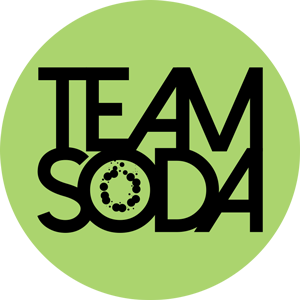Did you know each website page needs its unique title tag? Title tags and meta descriptions are key for good SEO. They boost your site’s visibility on search engines like Google.
Meta descriptions can really help more people click on your site. Even though they don’t directly help your ranking, they show your content’s relevance. Your title tags should be 50-60 characters long, with important keywords.
But, it’s not all about rankings. Good title tags and meta descriptions tell search engines and visitors what your content is about. Since Google sometimes changes them, get them right to attract more visitors and keep them interested.
Introduction to Title Tags and Meta Descriptions
Title tags and meta descriptions help make your website more visible and attractive. They are key for SEO, serving as brief summaries that direct both users and search engines. They show what your site’s content is about.
What is a Title Tag?
Title tags summarize a webpage’s content. You see them as clickable headlines in search results. They are essential for keyword optimization. Well-made title tags give a clear preview of the page’s content. This improves the user’s experience. By using the right keywords, title tags help draw in more visitors.
What is a Meta Description?
A meta description is a short summary under the title tag in search results. It works like an ad for the page. Even though it doesn’t directly change your rank, it’s still vital for keyword optimization. A good meta description makes more people want to click on your site. This can greatly help increase your site’s visibility and interaction.

The Importance of Optimizing Title Tags and Meta Descriptions
Improving click rates and driving website traffic is key. SEO best practices make title tags and meta descriptions crucial. They summarize page content. They also help search engines understand and sort that content.
Title tags should be 50 to 60 characters long. They must start with the main keyword. This makes them visible and fully shown in search results. Every title tag must be unique and descriptive. This will help with keyword optimization and make pages stand out.
A good title tag starts with the main keyword. It then adds a clear description. Lastly, it includes the brand name. For instance, “Best Running Shoes – Ultimate Comfort | Brand X.” Using action words and promises can increase clicks. This helps with search rankings.

Meta descriptions need to be 150 to 160 characters long. Although not a direct ranking factor for Google, a good meta description can draw people in. Each should be unique. It should act as a mini-ad to encourage clicks. This can improve clicks and rankings over time.
A meta description should quickly tell what’s on offer. It should mention keywords and entice users. For example, “Discover ultimate comfort with our latest running shoes. Shop now for exclusive deals.” This gives visitors a reason to click.
By following SEO best practices, you can optimize your site well. Good keyword optimization improves visibility and traffic. Making sure each page has its own title tag and meta description works wonders. It’s a simple but effective on-page SEO tactic.
SEO Best Practices for Title Tags
Using SEO best practices for title tags is key. It helps optimize title tags and meta descriptions. This boosts SERP rankings and increases user engagement.

Keyword Placement in Title Tags
Put the main keyword at the start of the title tag. This makes users less likely to scroll past your page. It also boosts click-through rates. Adding keywords that match what users are searching for improves visibility.
Title Tag Length
Your title tags should have 50 to 60 characters. This way, they fit well on search results pages. If tags are longer than 70 characters, Google might shorten them. This lessens their effect.
Creating Unique and Engaging Title Tags
Each webpage needs its own title tag. This helps users and search engines see the page’s relevance. Make sure titles match the H1 tag to avoid Google changing them. Steer clear of vague words like “Home Page.” Use titles that accurately describe the content.
Good title tags and meta descriptions boost user experiences. They encourage more social shares and visits. Use dashes, pipes, and colons in titles for clear yet effective structure. With these tips, your SERP rankings will surely rise.
Strategies for Crafting Effective Meta Descriptions
Meta descriptions are key for on-page SEO. They give a quick look at your page’s content on search results. To get good results, use these strategies:

Using Keywords in Meta Descriptions
Adding relevant keywords to your meta descriptions is crucial. If you include the main keyword smoothly, your visibility improves. This helps users find what they need faster.
Optimal Length for Meta Descriptions
Keep meta descriptions between 150-160 characters. This way, they won’t get cut off. Short, clear descriptions show the page’s value immediately.
Creating Compelling Meta Descriptions
Think of meta descriptions as short ads. Point out why someone should visit your page. Use clear action words to grab attention.
Add unique details to each description to boost clicks. Using strong words, numbers, or emojis can make your message pop.
Common Mistakes to Avoid
When working on optimizing title tags and meta descriptions, it’s easy to slip up. These errors can make your website optimization efforts less effective. Avoiding these mistakes is key to improving your site’s performance.
- Duplicate Content: Using the same title tags or meta descriptions on more pages can mix up search engines and hurt rankings.
- Exceeding Character Limits: Keep title tags under 60 characters. Meta descriptions should be under 160 characters for desktop and 120 for mobile. This helps ensure your content looks right in search results.
- Keyword Stuffing: Filling your title tags and meta descriptions with too many keywords can get you penalized. Use keywords in a natural way instead.
- Deceptive or Irrelevant Descriptions: Misleading descriptions can lose users’ trust and increase bounce rates. This is bad for your SEO.
- Filler Words: Avoid using filler words in your title tags and meta descriptions. They don’t add value.
Statistics show that Google often changes meta descriptions on mobile devices. They do this up to 70% of the time. So, write meta descriptions well. Make sure they match your page content closely.

Avoid these common mistakes to make your optimizing title tags and meta descriptions work better. This follows SEO best practices. It makes your website work better and improves user experience.
Tools and Plugins for Optimization
Making your website more visible on search engines is key. This means working on title tags and meta descriptions. Tools and plugins for SEO can make this much easier. Let’s look at some top tools, including Yoast SEO for WordPress, to help in your efforts.

Yoast SEO for WordPress
Yoast SEO for WordPress is a top choice for improving your website. It gives instant feedback on title tags and meta descriptions. You can know the best length for descriptions and ensure the right keywords are included. This tool makes your site more likely to be seen.
It warns you if a keyphrase is missing or used too much. The premium version can even create meta descriptions for you. All these features aim to increase your site’s visibility online.
Other Useful Plugins
Besides Yoast SEO for WordPress, there are more plugins to help your site:
- SEOPress: It’s great for meta titles and descriptions, keyword research, and checking if your content is easy to read. SEOPress stands out for its ease of use and customization.
- MozBar: This tool gives detailed reviews of your site’s SEO elements. It’s perfect for a deep dive into how your website is doing.
- SEMrush: Famous for looking at what competitors do and analyzing backlinks. SEMrush also helps with keywords and meta tags. It’s a full package for boosting your website.
- Ahrefs: Offers in-depth SEO analysis from keywords to backlinks. You need a subscription, but it’s a solid choice for SEO pros.
Using these SEO tools can improve your meta tags and website’s overall SEO. They help make sure your site is seen by more people. Adding these tools to your SEO plan can lead to better results that last longer.
Conclusion
Making your Title Tags and Meta Descriptions better is key for good SEO. They help your website show up more on search engines and increase your Click-Through Rates (CTR). This means they give clear and catchy info to people searching.
Google shows the first 50-60 characters of title tags. So, keep your titles short to avoid being cut off. Also, make meta descriptions between 155-160 characters. This way, they show up completely in search results. These steps help your site stand out online.
Use tools like Google Search Console to check how your site is doing. Trying out A/B tests gives you good insights too. You can see what works best by looking at impressions, clicks, and CTR. This helps you improve your SEO strategy.
In the end, paying attention to SEO best practices boosts your website’s visibility. By working hard on your title tags and meta descriptions, you can draw in more visitors. Always watch for new SEO trends like mobile-first indexing and voice search to keep up.



